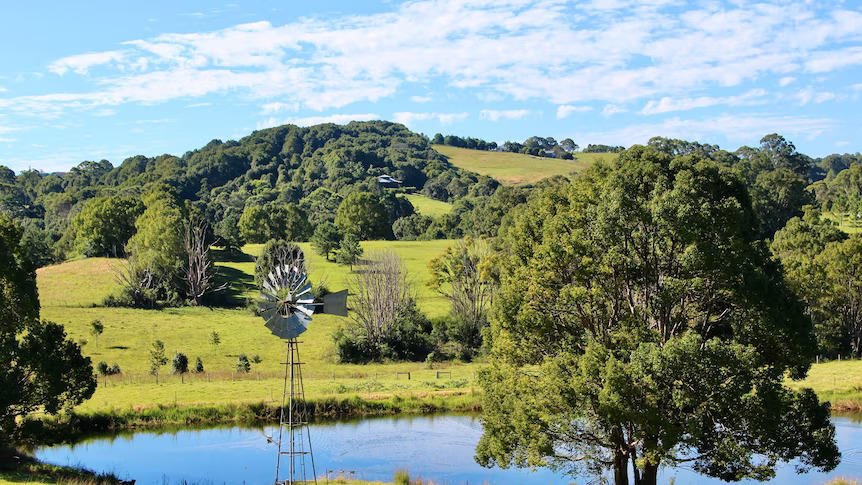Original publication by Chris Baraniuk for wired.com on 1 September 2022
The country is exploring cloud seeding, GM crops, and a multibillion-dollar water-transfer system to address its worst water shortages on record.

ON A GRASSY plateau overlooking a valley in central China, two officials stood by as a small, thin rocket blasted off from the rear of a pickup truck. The rocket, carrying a payload of silver iodide rods intended to initiate rainfall, was headed for the clouds above Zigui county in Hubei province. It was just another round of artillery fire in China’s war against its current drought—the worst on record in the country.
Using chemicals to artificially cause the release of rain from clouds is called cloud seeding. Besides the rockets, Chinese authorities have also sent large drones into the skies above Sichuan province, another central region of the country. The aircraft have been shooting silver iodide flares into the atmosphere, also in the hope of prompting precipitation.
This frenzy of activity is China’s response to a drought that has turned lakes into dust bowls and sent citizens in some areas scrambling underground to escape temperatures of 40 degrees Celsius and above. Evaporating rivers have also caused a drop in hydropower generation at dams, leading to electricity shortages.
China is clearly trying to fight back against this crippling drought. But the country’s water scarcity problems run deep. And it’s not clear yet how effective its attempts to redress the situation are going to be.
“If you go and seed a cloud and then you observe how much rain or snow you get, you don’t know how much you would have gotten if you hadn’t seeded it,” says Adele Igel, head of the cloud physics group at the University of California, Davis, noting how difficult it is for scientists to know if cloud seeding actually works.
She points to a 2019 review in which the authors found that certain forms of cloud seeding could increase precipitation by up to 20 percent when targeted at wintertime clouds in mountain areas. “The idea with silver iodide is that it helps to form new ice crystals or snowflakes in the cloud,” Igel explains. These additional snowflakes should then grow and fall more readily as precipitation. However, there is no consensus over whether cloud seeding works during the summer, when there is little or no ice in clouds, she adds.
Plus, you need clouds to be there in the first place. During extreme heat events they may be scarce because there is less water on the ground to evaporate into the atmosphere above. At best, cloud seeding is going to be “marginally effective” as a drought-mitigation measure, Igel says.
But that’s not the only thing China is doing to combat drought, though most of its other interventions are longer-term in nature. Take the South-to-North Water Diversion Project, a colossal engineering effort to build canals and tunnels that will ferry water from the south of China to the north. The estimated total cost is $62 billion, and an $8.9 billion tunnel to Beijing was announced just last month.
There’s just one problem. The current drought is hitting China’s central and southern areas, where water is supposed to be more reliably available, rather than the more frequently drought-affected north.
“You could actually exacerbate the drought situation,” says Gabriel Collins at Rice University’s Baker Institute for Public Policy in Texas, arguing that excessive future water transfers could lead to two large swathes of the country becoming prone to seasonal water shortages, rather than just one.
He adds that while other technologies, such as desalination, might seem tempting, they are enormously expensive and would likely be restricted to heavily industrialized coastal areas where demand makes them economically viable.
Collins recently coauthored an article on China’s longstanding water-scarcity issues with Gopal Reddy, founder of Ready for Climate, an environmental research organization. “The structural problem is, to me, far scarier than this season’s drought,” says Reddy, who notes that China has limited usable groundwater reserves—which can sometimes be tapped to alleviate drought—and that these are already overexploited, particularly in the north of the country.
Groundwater reserves are “the lender of last resort,” says Nathan Forsythe at Newcastle University in the United Kingdom, because they take the longest to replenish once depleted. They’re dependent on rainwater filtering down deep into the earth—most rain simply evaporates or washes away.
But filling reserves is, in principle, a good way to plan ahead for drought. China has huge capability in this area and could be building reservoirs to hold more rainwater on farms, or planting vegetation that is good at retaining moisture. For thousands of years, small-scale farmers in China have been using ponds to hold water in place, according to reports. Expanding the use of such interventions could help too.
One of the most serious effects of this year’s drought is its impact on crops. Photos have already emerged of sun-scorched fields full of dead fruit and vegetables. But China more or less leads the world in attempts to develop drought-resistant crops, argues Rebecca Nadin at the Overseas Development Institute, a global affairs think tank. This may soon extend to the genetic engineering of wheat and rice. China also recently approved the use of drought-resistant soy seeds marketed by Argentinian firm Bioceres.
All of these interventions may go some way toward improving China’s chances in the battle against drought. But the threat of ever-drier conditions, driven by climate change, looms large, says Aiguo Dai of the State University of New York at Albany. It’s possible that some areas of China, particularly those in the north, might see more precipitation in the coming years. But if the overall trend leads to hotter and drier conditions in places unable to adapt quickly to water scarcity, things will get very difficult.
Forsythe notes that the most immediate thing any country can do in response to drought is to curtail demand and ensure that water is not being wasted. But in a country of 1.4 billion people, where factories toil night and day to produce products that are shipped around the world, there are clearly limits to how much those brakes can be pumped. The recent, relatively brief electricity shortages caused by a lack of hydroelectric power alone are estimated to have left around 1 million electric vehicles and 400,000 charging stations short of energy, for instance.
Water scarcity is becoming a problem that all of us will face, to some degree. But Chinese authorities must be acutely aware of just how much drought threatens the country’s ambitions. The “greatest risk” to China’s preeminence as the leading superpower of this century is probably its “environmental vulnerabilities,” says Forsythe. “Stewarding their natural capital would certainly be in their interest.”




